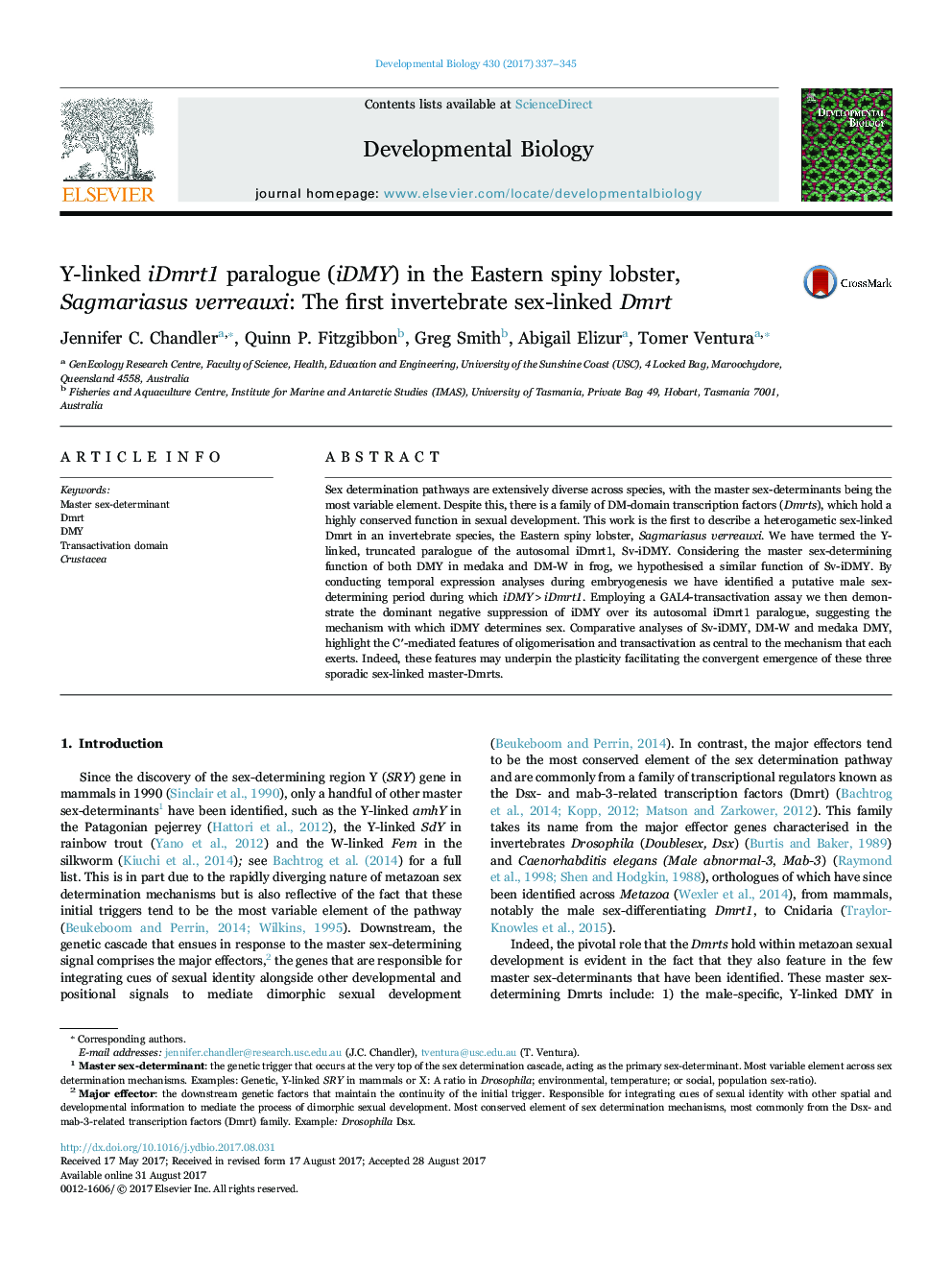| کد مقاله | کد نشریه | سال انتشار | مقاله انگلیسی | نسخه تمام متن |
|---|---|---|---|---|
| 5531631 | 1549562 | 2017 | 9 صفحه PDF | دانلود رایگان |

- The first heterogametic sex-linked Dmrt identified in an invertebrate: Sv-iDMY.
- Sv-iDMY embryonal expression predicts the male sex-determining period.
- Sv-iDMY dominantly suppresses its autosomal paralogue iDmrt1.
- iDMY suggested to be the master sex-determinant in S. verreauxi.
- Transactivation domain predicted to be fundamental to Dmrt functionality across Phyla.
Sex determination pathways are extensively diverse across species, with the master sex-determinants being the most variable element. Despite this, there is a family of DM-domain transcription factors (Dmrts), which hold a highly conserved function in sexual development. This work is the first to describe a heterogametic sex-linked Dmrt in an invertebrate species, the Eastern spiny lobster, Sagmariasus verreauxi. We have termed the Y-linked, truncated paralogue of the autosomal iDmrt1, Sv-iDMY. Considering the master sex-determining function of both DMY in medaka and DM-W in frog, we hypothesised a similar function of Sv-iDMY. By conducting temporal expression analyses during embryogenesis we have identified a putative male sex-determining period during which iDMY>iDmrt1. Employing a GAL4-transactivation assay we then demonstrate the dominant negative suppression of iDMY over its autosomal iDmrt1 paralogue, suggesting the mechanism with which iDMY determines sex. Comparative analyses of Sv-iDMY, DM-W and medaka DMY, highlight the Câ²-mediated features of oligomerisation and transactivation as central to the mechanism that each exerts. Indeed, these features may underpin the plasticity facilitating the convergent emergence of these three sporadic sex-linked master-Dmrts.
Illustration of the temporal expression profiles of the three heterogametic sex-linked Dmrts: the novel â iDMY from lobster (S. verreauxi) alongside, â DM-W from frog (X. laevis) and â DMY from medaka (O. latipes). Embryogenesis and early development is described in months (m) for the lobster and days (d) and days post hatch (dph) for frog and medaka, dashed lines represent hatching in the case of the lobster and medaka and dashed grey regions represent terminal metamorphosis in the case of lobster and frog. Domain architecture of each Dmrt is shown where diamonds represent DM domains, circles the specialised vertebrate Dmrt1 domains and green boxes the predicted TADs. Our analyses highlight that although each of the DM paralogue pairs exerts a unique mechanism of sex determination, there appear to be common features that dictate their regulation. Credit for developmental illustrations to Xenbase Iwamatsu (2004) for X. laevis and Iwamatsu (2004) for O. latipes.136
Journal: Developmental Biology - Volume 430, Issue 2, 15 October 2017, Pages 337-345